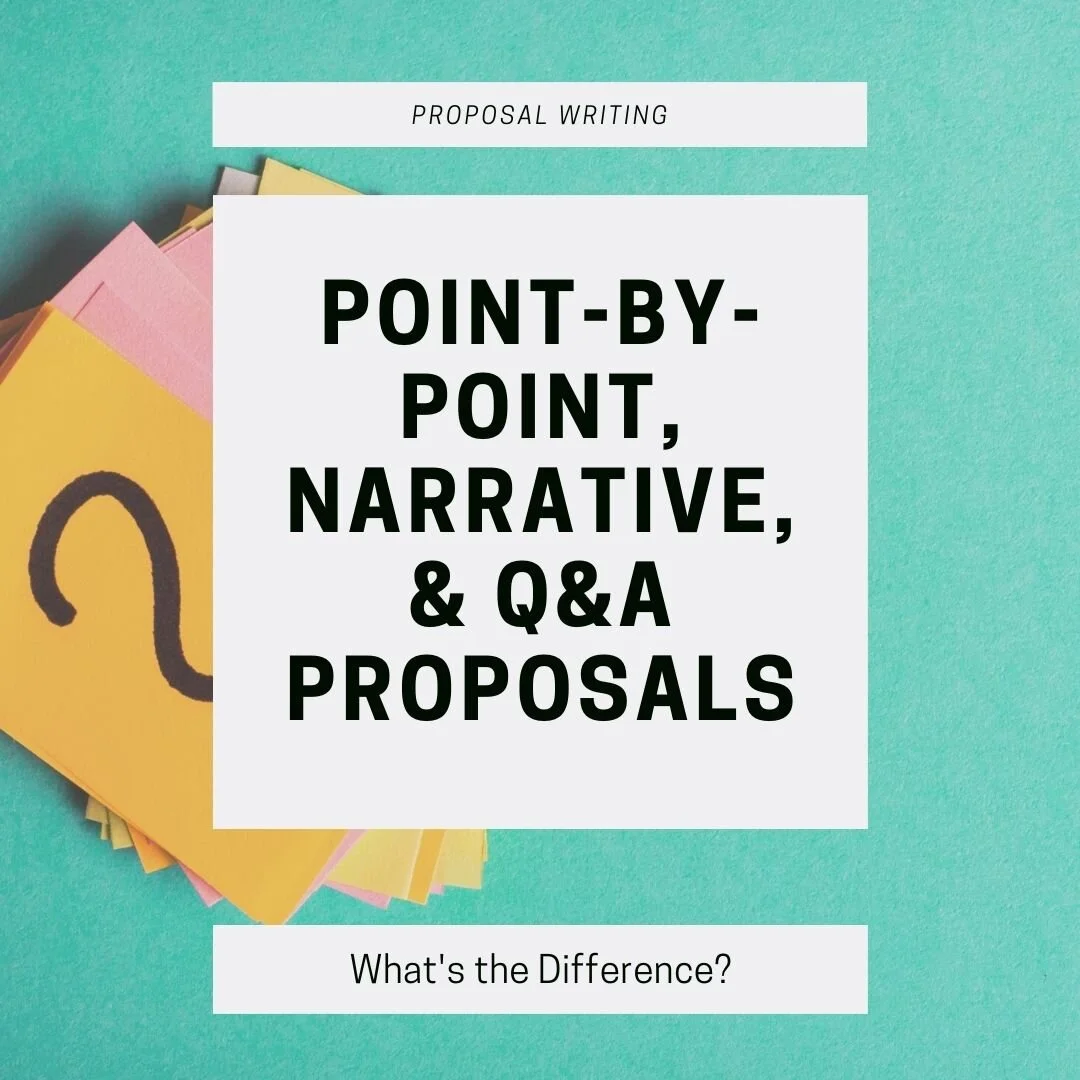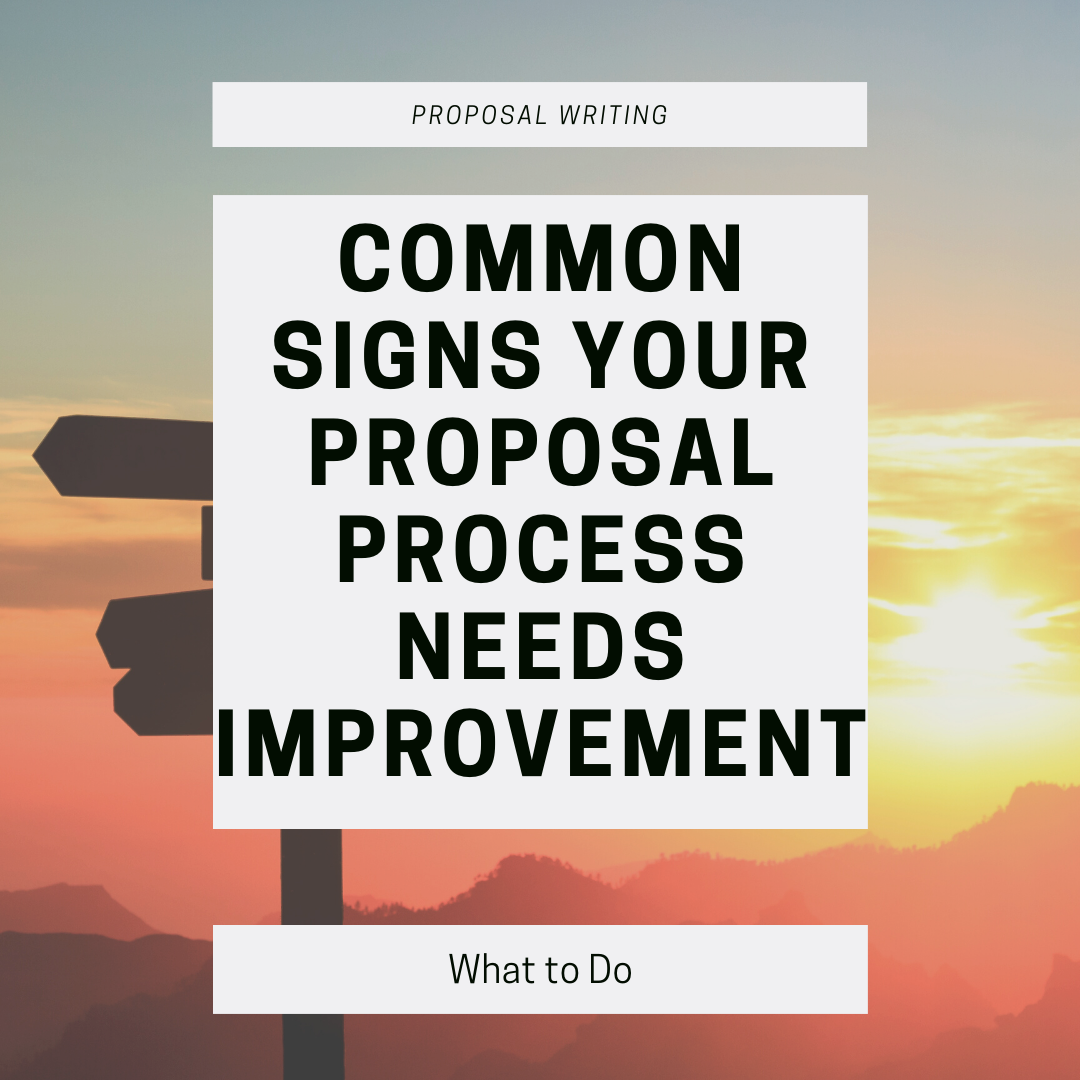When you’re a small company bidding on a project, you sometimes find yourself up against the big players. It may seem hopeless when they have seemingly endless resources available to them, but many procurement teams look for ways to work with small businesses. There are ways to position your company to help you to win the larger projects even when a big company is competing against you.
Read MoreEveryone has a different approach to creating proposals. If you’ve heard the terms point-by-point, narrative, or question & answer but don’t know where to begin, then read on to learn more.
Read MoreResponding to RFPs takes a lot of time. Most large companies have teams of at least twenty people dedicated solely to responding to RFPs. Small businesses don’t have the luxury of these resources, and that means it’s important to vet out RFPs to ensure they are worth the time before you invest in creating the proposal.
Read MoreYou just received a new RFP, and as you scroll through the document, you check all of the boxes. Qualified team? Yes. Compelling solution? Check. Share your financial statements? Wait..
More and more RFPs are asking potential bidders to share their financial statements as part of the proposal.
Read MoreWhen people think of proposals, a lot of focus is on the content. While that is an essential part of creating your proposal, an often overlooked section is your proposal design. Many small businesses don’t have a professional designer on staff, so the design often falls to the seller or business owner to create the design. If this is you, never fear! It is possible to create a branded, well designed proposal even if all you have is a company logo.
Read MoreWhether you’ve been invited to respond to an RFP or you found the posting online, coming across an RFP for a project that aligns with your business goals is an enticing prospect. RFPs are typically for large projects, and those large projects mean more revenue and often a better bottom line. While the opportunity might be tempting, there’s often just one thing standing in the way: how do you actually create a winning RFP response?
Read MoreWhile every company, project, and customer is different, the fundamentals of proposal development stay the same. There are a few key sections that will always be in your proposal, and there are less common sections to prepare for in advance. When it comes to writing the actual content, however, there are two main activities that will help make your proposal stand out.
Read MoreBeing invited to respond to an RFP is both a blessing and a curse. On the one hand, you have an opportunity to secure a potentially very lucrative contract. On the other, you now have to drop everything to create a compelling proposal within a limited timeframe. It’s easy to pass on opportunities with a thought of “I’ll go after the next one”, and before you know it, it’s been months since you sent out a response to an RFP.
Fortunately, there are a few ways to make it easier to respond to RFPs regularly.
Read MoreWhether you respond to RFPs or send out less formal proposals, when busy season arrives, there aren’t enough hours in a day to update your content. By prepping your content library for busy season in advance, you save many headaches down the road, and the improved proposal content will help you win more contracts.
Read MoreWhen you’re asked to create a proposal for a new project, you likely have no idea where to start. Whether it’s an internal project or a project for a potential client, there are a few key sections to include in your proposal.
Read More“I hate writing proposals” is one of the most common comments we hear. And, honestly, why wouldn’t you hate writing proposals? They have tight deadlines, high pressure, often a lot of competition, and for RFPs, a ton of questions you have to answer. Fortunately, there are some ways to make the process a little less painful.
Read MoreIf you search “how to write a business proposal”, you will find guides for all types of proposals. The hard part is narrowing down the content to find the type of proposal that fits your needs. In this post, we cover the 5 most common types of business proposals and how to create one that stands out.
Read MoreEveryone knows to include the main sections of your proposal: pricing, solution description, company overview, etc. However, including not-so-common content can help your proposal stand out and connect with the customer. One type of content that is often overlooked in proposals is client testimonials.
Read MoreWhether you’re new to the world of RFPs or a proposal writing expert, sometimes you need a little extra help to get that RFP response out the door. In today’s post, we’re covering a few different types of RFP support services available to help you win your next contract.
Read MoreA key step for winning larger contracts for any construction business is to enter the world of RFPs. If you’re new to the space, however, it may be overwhelming and confusing. In today’s post, we’ll dive into construction RFPs and how you can navigate the process.
Read MoreSending proposals to customers is often a high stakes activity. Most have hard deadlines, the potential for tough competition, and the pressure to win a new contract for the business. A clear and repeatable process makes it easier to create winning proposals. If you haven’t updated your proposal process for a while, it may be time to take another look.
Read MoreAs one of the final steps in the sales process, improving proposal win rates can have a direct impact on your business. While there are many steps you can take to improving your win rates, there is one that stands out from the rest.
Read MoreOut of all of our clients, about 90% cite a fear of having an unprofessional proposal as the reason for seeking help. If you’re in a similar situation, there are a few steps you can take today to make sure your proposals look professional.
Read MoreUnless you are a proposal writer, your main skillset isn’t likely in creating proposals. Because of this, it can sometimes be a good idea to bring in proposal help to make sure your potential clients receive your best possible proposal. In this post, we look at a few example scenarios of when you might need help and the types of support that would be a best fit.
Read MoreAfter spending hours crafting content, designing graphics, and formatting your proposal, you hear back from the customer that they went with someone else. While a loss is always tough, it doesn’t have to be a total loss. Instead, use this to improve your process for next time. Below are a few ways you can turn a proposal loss into a win for your proposal process.
Read More



















